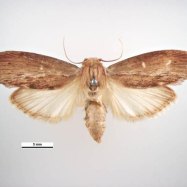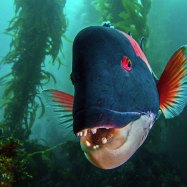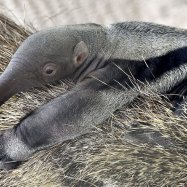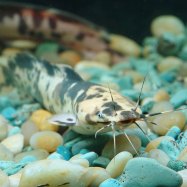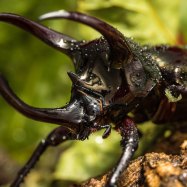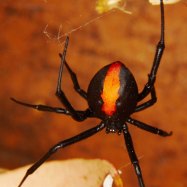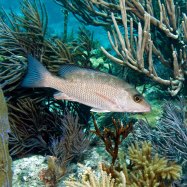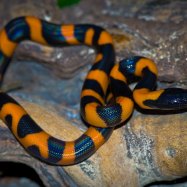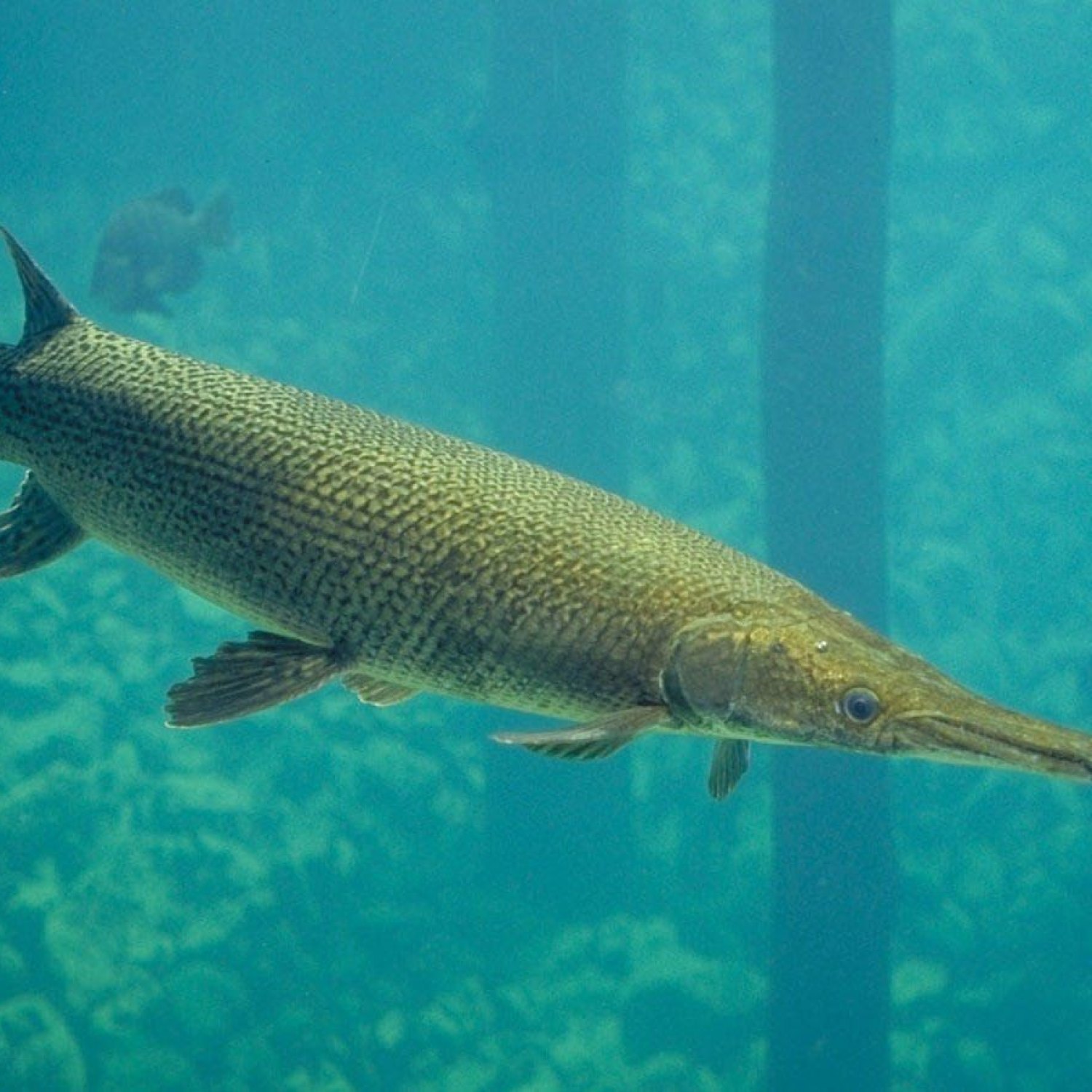
Alligator Gar
Up to 10 feet (3 meters)
The Alligator Gar, found in Southern US and Northern Mexico, can grow up to 10 feet long and is known for its long snout. Belonging to the Lepisosteidae family, it has an elongated, cylindrical body. Its powerful jaws and sharp teeth make it a top predator in its habitat. #alligatorgar #predator #southUS #Mexico
Animal Details Summary:
Common Name: Alligator Gar
Kingdom: Animalia
Habitat: Freshwater bodies such as rivers, lakes, and swamps
The Majestic Alligator Gar: A Fascinating Prehistoric Predator
For centuries, humans have been fascinated by the mysterious creatures that inhabit our planet. From the depths of the oceans to the treetops of the rainforests, animals have captivated our imaginations and sparked our curiosity. Among these creatures, there is one species that stands out with its unique appearance, impressive size, and intriguing behavior – the alligator gar.Known scientifically as Atractosteus spatula, the alligator gar is a fascinating species that can be found in the freshwater bodies of North and Central America Alligator Gar. It is a member of the Lepisosteidae family, commonly known as gars, and is the largest of all living gar species. In this article, we will dive into the world of the alligator gar and discover what makes it such a remarkable and iconic creature.
Ancient Origins
The alligator gar's scientific name, Atractosteus spatula, gives us some clues about its origins and appearance. Atractosteus translates to "arrow bone," referring to the gar's long, slender body. The term spatula means "spoon," which describes the shape of its snout. These fascinating creatures have been around for millions of years and are considered living fossils due to their unchanged appearance since the Mesozoic era, over 230 million years ago.Habitat and Distribution
Alligator gars are predominantly found in the freshwaters of North and Central America. Their habitat includes rivers, lakes, swamps, and backwaters, where they can thrive in both shallow and deep waters. They are primarily found in the southern United States, with their range extending from the Mississippi and Missouri River basins in the north to Mexico in the south Aardvark.Predatory Behavior
One of the most fascinating aspects of the alligator gar is its predatory behavior. As opportunistic hunters, they utilize a sit-and-wait strategy, lurking in the shadows, and striking their prey with lightning-fast speed. Their long, needle-like teeth are perfect for catching fish, and they have been known to eat anything from small crustaceans to birds and even other alligator gars.However, their feeding methods have caused concern among fishermen, as they can sometimes be seen as a threat to gamefish populations. In reality, alligator gars play a crucial role in maintaining the balance of their ecosystems. As top predators, they help regulate the population of other species, ensuring a healthy and diverse aquatic community.
Appearance and Physical Characteristics
The alligator gar has a unique and intimidating appearance, with its olive-green or brown coloration and its elongated, cylindrical body that can reach up to 10 feet (3 meters) in length. They are easily recognizable by their long, narrow snout with teeth protruding from the top and bottom jaws, giving them a distinct alligator-like appearance.Another characteristic that sets them apart from other gars is their caudal fin or tail, which is rounded instead of forked, making them excellent swimmers. Not only are alligator gars impressive in size, but they are also incredibly tough, with thick, bony scales covering their body that acts as armor against potential predators.
Endangered Species
Despite their intimidating appearance, alligator gars are considered a threatened species. Due to overfishing, habitat destruction, and the introduction of invasive species, their populations have declined significantly over the years. In fact, many U.S. states have implemented strict regulations on their harvest to help protect these fascinating creatures.Conservation efforts are underway, with research being conducted to understand their behavior and habitat requirements better. Recently, a team of scientists discovered that the alligator gar plays a vital role in the ecosystem by scavenging large carcasses and preventing the spread of certain diseases. This finding highlights the importance of preserving and protecting this species.
An Important Cultural Symbol
For centuries, the alligator gar has been an important cultural symbol in Native American and Cajun communities. It is often featured in traditional art and is also a popular game fish among fishermen, with its tough scales used for making jewelry and its meat considered a delicacy in many Southern states.In addition, alligator gars have been featured in various myths and legends, often depicted as powerful creatures with mystical abilities. For example, some Native American tribes believe that alligator gars have healing powers, while others see them as a symbol of strength and resilience.
Impressive Survivors
The alligator gar's resilience and ability to adapt to changing environments are some of the factors that have contributed to their survival for millions of years. These creatures have endured significant environmental changes and have managed to thrive despite human threats.One of their most impressive survival tactics is their ability to breathe air using a swim bladder that also functions as a primitive lung. When water levels are low, alligator gars can surface to breathe, allowing them to survive in harsh conditions where other fish may not.
Conclusion
The alligator gar is a unique and awe-inspiring creature that offers a glimpse into the world of ancient species that have stood the test of time. With its impressive size, appearance, and fascinating behavior, it is no wonder that this species has sparked the interest and admiration of humans for centuries.However, as with many other species, the alligator gar faces numerous threats, and it is up to us to ensure their survival for generations to come. By understanding their significance and taking steps to conserve and protect their habitat, we can continue to marvel at these remarkable creatures and appreciate their important role in our ecosystems. Let us work together to preserve the alligator gar and other magnificent animals that make our planet a truly remarkable place.

Alligator Gar
Animal Details Alligator Gar - Scientific Name: Atractosteus spatula
- Category: Animals A
- Scientific Name: Atractosteus spatula
- Common Name: Alligator Gar
- Kingdom: Animalia
- Phylum: Chordata
- Class: Actinopterygii
- Order: Lepisosteiformes
- Family: Lepisosteidae
- Habitat: Freshwater bodies such as rivers, lakes, and swamps
- Feeding Method: Predatory
- Geographical Distribution: North and Central America
- Country of Origin: United States and Mexico
- Location: Southern United States and Northern Mexico
- Animal Coloration: Olive-green or brown with a pale yellow underbelly
- Body Shape: Elongated and cylindrical body with a long snout
- Length: Up to 10 feet (3 meters)
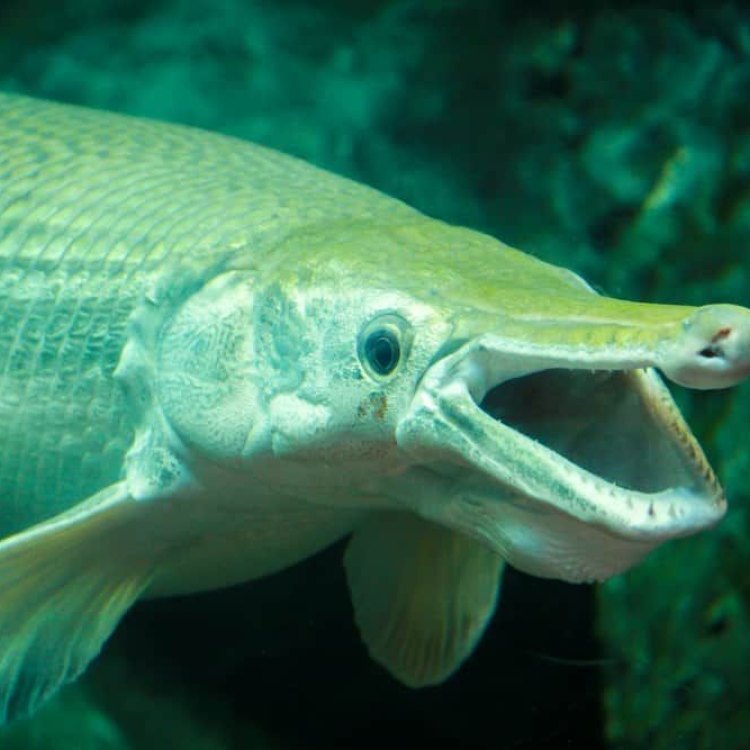
Alligator Gar
- Adult Size: 6 to 8 feet (1.8 to 2.4 meters)
- Average Lifespan: Up to 50 years
- Reproduction: Sexual
- Reproductive Behavior: External fertilization
- Sound or Call: Produces a variety of vocalizations
- Migration Pattern: Migratory
- Social Groups: Solitary
- Behavior: Nocturnal and ambush predator
- Threats: Habitat loss, overfishing, and pollution
- Conservation Status: Least Concern
- Impact on Ecosystem: Top predator that helps maintain balance in aquatic ecosystems
- Human Use: Sport fishing and food source
- Distinctive Features: Long snout, sharp teeth, and armored scales
- Interesting Facts: Alligator Gar is the largest species in the gar family. It can breathe both in water and air due to its swim bladder. It is often mistaken for an alligator due to its long snout and large teeth.
- Predator: Humans, larger alligator gar, and larger predatory fish
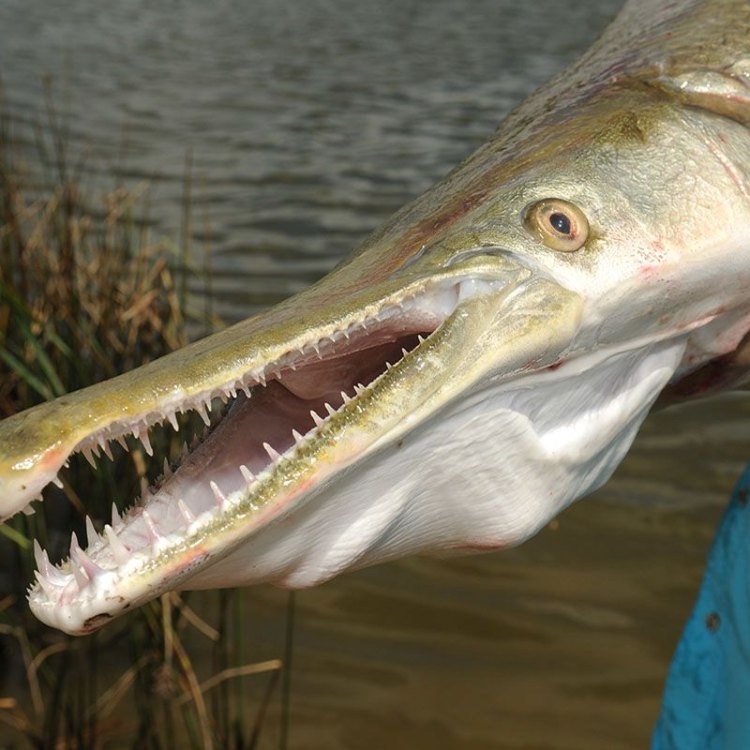
Atractosteus spatula
The Fascinating Alligator Gar: A Top Predator in Aquatic Ecosystems
Deep in the murky waters of North America, there lives a fierce and elusive creature - the Alligator Gar. This prehistoric fish with its long snout, sharp teeth, and armored scales may look like an alligator, but it is actually a fish. With its impressive size, unique abilities, and crucial role in maintaining the balance of aquatic ecosystems, the Alligator Gar is a species worth learning about and protecting.Growing up to a whopping 6 to 8 feet (1 PeaceOfAnimals.Com.8 to 2.4 meters) in length and weighing over 300 pounds, the Alligator Gar is the largest species in the gar family. They can live for up to 50 years, making them one of the longest-living freshwater fish. It is no surprise that this ancient fish has withstood the test of time and still thrives in its natural habitat.
Reproduction for the Alligator Gar is sexual, with males courting females during the breeding season. However, one of the most interesting features of its reproductive behavior is external fertilization. The female lays up to 79,000 eggs, and the male fertilizes them externally. The eggs then attach to aquatic vegetation, and after hatching, the young gar are left to fend for themselves. It is estimated that only 10% of the eggs survive to adulthood, making the Alligator Gar an important species to protect American Water Spaniel.
When it comes to communication, the Alligator Gar is not known for its singing skills. However, it does produce a variety of vocalizations, primarily during the breeding season. These vocalizations can range from grunting and hissing to thumping noises, similar to a croaking sound. These vocalizations help in communication and courtship between males and females.
Despite their massive size, Alligator Gars are migratory by nature. They are known to move from one body of water to another, and sometimes even travel great distances. This migration pattern allows them to find suitable breeding grounds and helps in the dispersal of their young.
These solitary creatures are most active at night and are known to be ambush predators. Their long snout, sharp teeth, and armored scales make them formidable hunters. Alligator Gars have excellent senses and can detect vibrations in the water, allowing them to locate their prey with ease. They are opportunistic feeders and will eat almost anything that crosses their path, including small fish, birds, and even small mammals.
The Alligator Gar faces several threats to its survival. Habitat loss due to human activities such as dam construction and land development is a significant concern. These dams disrupt the migration patterns of the Alligator Gar, making it difficult for them to reach their breeding grounds. Overfishing is another threat, as these fish are often caught as bycatch or targeted for their meat, which is considered a delicacy in some communities. Pollution from pesticides and other chemicals also affects the water quality and can harm these fish. The Alligator Gar is listed as "Least Concern" on the IUCN Red List, but continued human activities may lead to its decline in the future.
Despite these challenges, the Alligator Gar plays a crucial role in maintaining the balance of aquatic ecosystems. As top predators, they help control the population of smaller fish, thus preventing them from overgrazing on aquatic vegetation. This vegetation, in turn, provides essential shelter and food for other aquatic species. Therefore, the preservation of the Alligator Gar is essential for the overall health of aquatic ecosystems.
Humans have long been fascinated with the Alligator Gar and have used it for various purposes. One of the most common uses of this fish is for sport fishing. Its sheer size and strength make it a challenging catch for anglers, and many consider it a prized catch. These fish are also used as a food source in some cultures, and their eggs are believed to have medicinal properties. However, with the decline in their population, regulations have been put in place to control fishing, ensuring the preservation of this species for generations to come.
Apart from their distinctive physical features and behaviors, the Alligator Gar also has some interesting facts that make it a unique species. One of its most notable characteristics is its ability to breathe both in water and air. Unlike most fish that rely solely on their gills for oxygen, the Alligator Gar has a modified swim bladder that can function as a primitive lung. This allows it to spend long periods of time out of the water, making it easier to navigate shallow waters or move between bodies of water.
The Alligator Gar may seem like a fierce predator, but it also faces threats from other predators in its habitat. Larger Alligator Gars and large predatory fish such as alligator snapping turtles and alligator reptiles can prey on the younger gars. However, these predators also play a vital role in maintaining the balance of the ecosystem, and the Alligator Gar remains a top predator.
In conclusion, the Alligator Gar is a unique and fascinating species that has roamed our waters for millions of years. Its impressive size, distinctive features, and essential role in maintaining the balance of aquatic ecosystems make it a valuable species to conserve. As humans, we must take necessary steps to protect and preserve this ancient fish and ensure its survival for generations to come. So, the next time you spot an Alligator Gar lurking in the water, take a moment to appreciate this top predator and its role in our ecosystem.
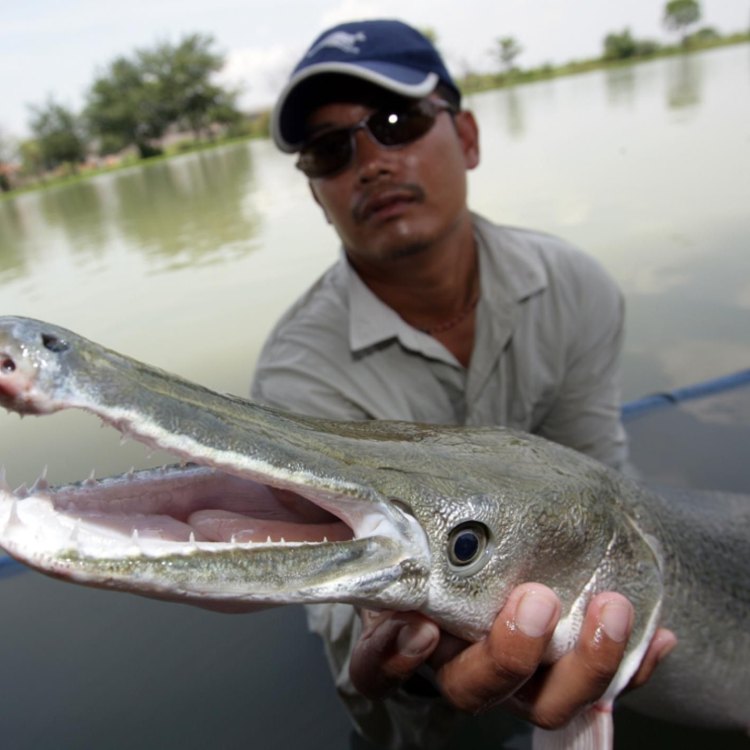
The Majestic Alligator Gar: A Fascinating Prehistoric Predator
Disclaimer: The content provided is for informational purposes only. We cannot guarantee the accuracy of the information on this page 100%. All information provided here may change without prior notice.

